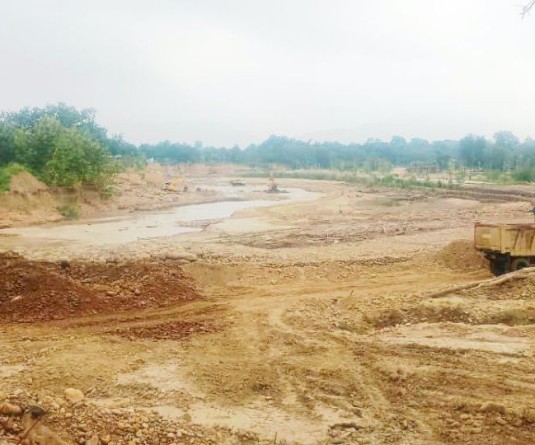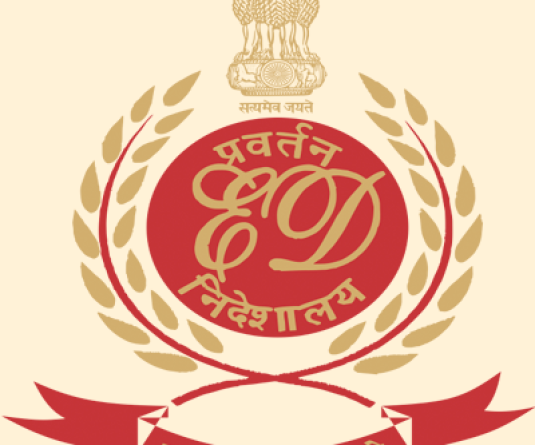
DIMAPUR, MAY 22 (MExN): The Nagaland Tribes Council (NTC) reiterated its demand that the cut off year for the Registration of Indigenous Inhabitants of Nagaland (RIIN) exercise be December 1, 1963.
A press release from the NTC said that Government of Nagaland “continues turning a deaf ear to this vital issue of concern till date and seemingly been contemplating to do things against the will of its own people.”
“…when the people of Nagaland desire to assess the flow of illegal migration into the state and requiring streamlining the ILP, the State Government has come up with the idea for registration of our own native and aboriginal people but purportedly to let others conveniently go scot-free in the state which is beyond comprehension. Maybe, surreptitiously, the government may even have an unsurpassed purpose for the benefit of some few if not jeopardy of the future of Nagaland,” the NTC claimed.
It said that in the RIIN Commission findings, the Notification No. AR-8/8/76 dated Kohima, the 28th April 1978 says to maintain 1-12-1963 as the cut-off year for the purpose of indigenous inhabitant of Nagaland is mentioned. However, it lamented that the Commission in its comment interpreted the above mentioned notification casting with complications and hence confuses the people.
“Cut-off year under BEFR Act 1873 can only screen out a person - other than the natives - settled in the state of Nagaland post creation of state. BEFR Act/ILP and RIIN are synonymous and cannot be separated from one another, but it is regretted to say that this important document is not recommended in its Part D- Recommendation column,” the NTC said.
It meanwhile said that in the 16-Point Agreement, the state is empowered to enforce the BEFR Act 1873/Inner Line Permit (ILP) within the entire territorial jurisdiction of Nagaland, stating that “The rules embodied in the Bengal Eastern Frontier Regulation 1873 shall remain in force in Nagaland.” “This point of agreement is meant to enforce in the entire jurisdiction of Nagaland with no exception to the then Dimapur Sub-Division,” the NTC maintained.
It said that the non-Naga tribes of Nagaland, namely; Kachari, Garo, Kuki and Mikhir (Now Karbis) who settled in the state of Nagaland on or before 1-12-1963 were granted both Indigenous Tribe and Indigenous Inhabitant status. The same Act and Notification further protects the non-Naga communities of Nagaland including Dimapur Sub-Division, namely; Gorkhas, Marwaries, and Muslims who settled in the state of Nagaland on or before 1-12-1963 were accorded Indigenous Inhabitant as well. There are cases where Punjabis settled in Nagaland prior to 1-12-1963 were issued Indigenous Inhabitant Certificates, the NTC informed.
It therefore termed the statement made by the government in a press conference on May 10 that “even though there were only around 100 families, if we ignore them, we will be doing them injustice” as “highly exaggerated and irrelevant.”
Further, it expressed concern at the State Government’s notification on ‘Tribal Belt or Compact Area,’ bifurcating the plain sector of the then Dimapur Sub-Division and demarcating the boundary. “The whole Nagaland State is Tribal area and therefore, one wonders as to why there should be another tribal belt or compact area in the same state. It is just a notification of boundary demarcation and nothing is mentioned about identification of indigenous inhabitant,” the NTC argued.
It said that the government proposes that a person settled in this area prior to November 21, 1979 is eligible for Indigenous Inhabitant status. “There cannot be two different cut-off dates and years in this tiny State of Nagaland and hence unacceptable,” it added.
Another point of contention the NTC raised was the recommendation by the RIIN Commission that proof of permanency of residence would be Electoral Roll from 1963 -2019 with a personal declaration of not having been enrolled in any other state. “The government’s eagerness to enforce easy way of RIIN/ILP w.e.f. 21st November, 1979 in the state and Proof of permanent residence at Page/58 on the basis, above seemingly reveals the secret plan by itself. There cannot be a free license for settlement so as to make it a floodgate,” the NTC stated.
It demanded that the government maintain the cut-off date as December 1, 1963 and revoke the notice regarding proof of permanency if not in consonance with the aforesaid date.
On Article 371A
Meanwhile, the NTC also expressed concern that in recent days some state political leaders “have in a slapdash fashion even uttered that Article 371A is a hindrance to the development activities in the state.”
“Instead of blaming the Constitutional status of provision that the people of Nagaland are blessed with, it would be better to do exercise to find out workable modalities for remedial measures. The Naga Village(s) and individual(s) are ready to part their land for development activities provided the government so requires but perhaps with a qualified negotiation as has been done in the earlier times,” the NTC said.
It argued that the government cannot take away or earmark areas in the name of development without any blueprint project report. “It amounts to deprivation of the land ownership and violation of the delegated power of Article 371A ‘Special provision with respect to the State of Nagaland’ and Article 300A ‘Right to property’ of the Constitution of India.”
“In a democratic country like India, land belongs to the people rather than state as in the case of communist countries. Nagaland is not an exception to it. Barring Dimapur district, which is cadastral area, the entire land in Nagaland is non-cadastral,” the NTC said.
It further argued that bit it cadastral or non-cadastral land, “there always is an owner and it belongs to the people. There is every possibility and chance of negotiation with the concerned village authority or private individual for any developmental works.”


.jpg)



